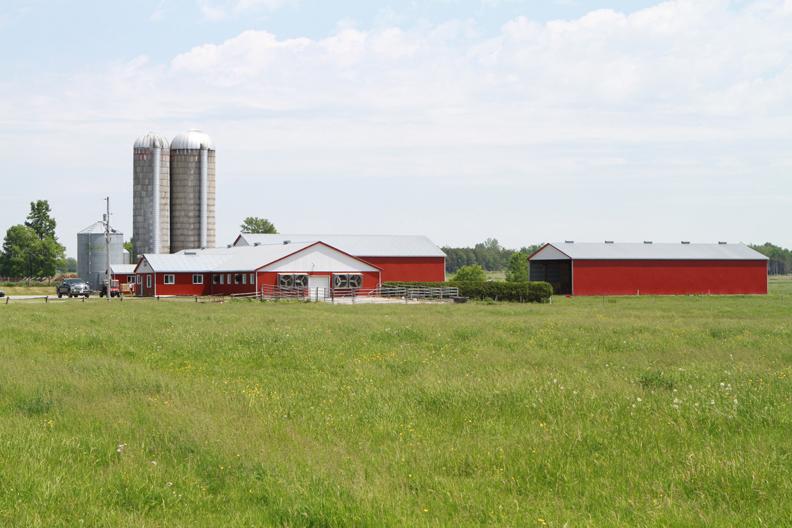The adoption of new technologies, optimal cow feeding strategies and major investments in research and innovation have helped substantially reduce the environmental impact of Canadian milk production over the past 30 years - and progress is ongoing.
Canadian dairy production in perspective
Thanks to Canadian dairy farmers’ continual advances in efficiency and innovation, the dairy industry’s carbon footprint is small and decreasing. Today, dairy production in Canada accounts for about 1% of our country’s total greenhouse gas emissions.1 This figure represents all aspects of dairy farming, including crop production and transportation to dairy processing plants.
Improving efficiency and sustainability
Informed by science, dairy farmers continue to reduce their impact on the environment, by adopting practices that benefit both the animals and the land. Great strides have been achieved through better cow nutrition, genetics, and more comfortable housing and modern farming practices. Crop management is more precise thanks to newer farming technology, improving soil health, so it takes less land and water to grow the crops needed to feed cows. Farmers invest in cow genetics, optimal feed, and comfort, all of which improves cow productivity.
Ensuring optimal nutrition and cow comfort helps to improve the efficiency and sustainability of Canadian dairy farms. Milk production is more efficient when cows are well fed, comfortable and content, and gains in efficiency help reduce environmental impact, improving sustainability.2,3
Investing in modern technologies
Dairy farmers are investing in modern technologies that focus on the health, comfort, and well-being of their herds. Many are adopting technologies such as milking robots, cow health trackers, motion-activated cow brushes, cow pedometers and GPS enabled tractors to enhance efficiency, sustainability, and animal care. Technology helps farmers optimize milk production, while improving the well-being of cows. For example, robotic milking technology can allow cows to be milked when they want, so the cows like it. So do farmers because it frees up their time and provides them with valuable real-time data. The milking robot records biometric data for each cow as they are milked, which provides farmers with insight to help optimize animal care.
Why Canadian farms are part of the solution
It’s a little-known fact that preserving Canadian farmlands is actually an important part of the climate change solution. Throughout Canada, farmers look after the landscapes on their farms including field crops, grasslands, pastures, and woodlands that are all part of the natural carbon cycle. These landscapes act as carbon sinks that actively sequester carbon from the atmosphere into the soil through the natural process of photosynthesis in plants that support animals and the local ecosystems they inhabit.
Want to learn more?
Learn more about how the Canadian dairy’s sector investments in research and innovation are driving meaningful progress towards Dairy Farmers of Canada’s net zero by 2050 goal.
References
- Environment and Climate Change Canada. 2023. National Inventory Report 1990-2021: Greenhouse gas sources and sinks in Canada. Accessed on July 25, 2024.
- Agriculture and Agri-food Canada. 2021. Canadian dairy information centre. Historical milk production – Dairy statistics and market information. www.agriculture.canada.ca. Accessed September 20, 2021.
- Agriculture and Agri-food Canada. 2021. Number of farms, dairy cows and dairy heifers. www.agriculture.canada.ca. Accessed September 20, 2021.


